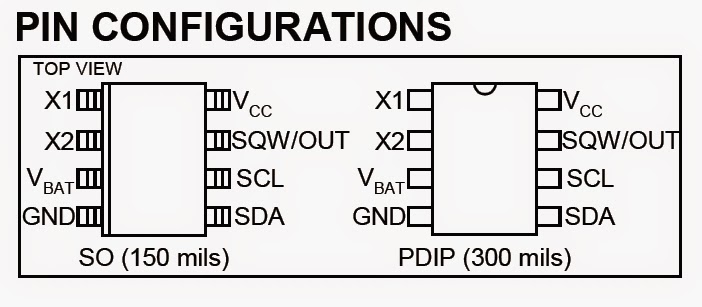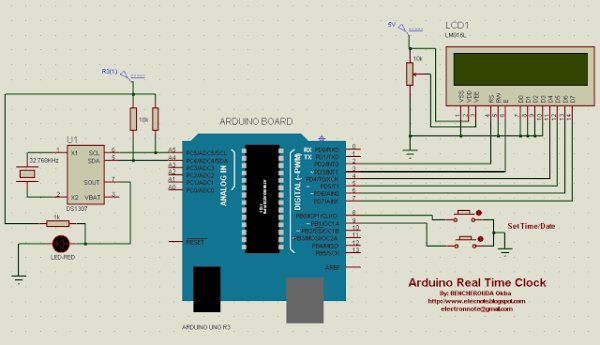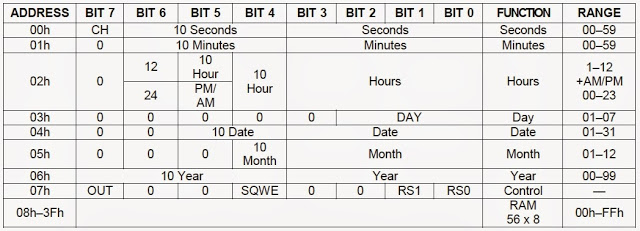Summary of Arduino Real Time Clock Using DS1307
This article explains how to interface an Arduino with the DS1307 real-time clock (RTC) to build a clock and calendar. It details the DS1307 pin configuration, circuit setup including buttons for setting time and date, and the use of an LCD to display date and time simultaneously. The circuit uses 10K pull-up resistors on the I2C bus for communication. The article also outlines the I2C protocol steps necessary to write data to the DS1307's registers.
Parts used in the Arduino Real Time Clock Using DS1307:
- Arduino board
- DS1307 real-time clock module
- LCD display
- Two push-buttons (for setting time and date)
- 10K pull-up resistors
- LED
- Connecting wires
This topic shows how to interface Arduino with DS1307 real time clock to make a clock and calender.
To understand the project and code easily you have to read the datasheet of the DS1307.
DS1307 Pin assignment:
The picture is taken from ds1307 datasheet and it shows the pin assignment of our chip RTC:

Arduino real time clock using DS1307 circuit:

On the circuit schematic there are two buttons used to set the time and date.
The LCD display shows both time and date at the same time, and the LED connected to the ds1307 toggles on and off (can be programmed on the software).
The I2C bus needs pullup resistors to run that why I used the 10K as a pullup resistors.
Arduino real time clock using DS1307 code:
We have to follow the table shown below write/read date to/from ds1307:

To write data to the ds1307RTC you have to follow these steps:
1 – Start I2C protocol,
2 – Send the DS1307 address which is in binary 11010000 (0x68),
3 – Send register address according to the below table (for example hour register is 0x02),
4 – Write register value,
5 – Stop the I2C protocol.
Writing data to ds1307 Arduino code:
Read More: Arduino Real Time Clock Using DS1307
